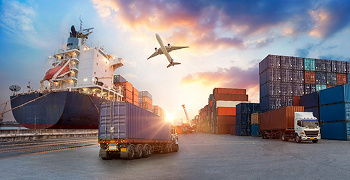
How e-invoicing mandates are reshaping indirect tax compliance
As e-invoicing mandates gain momentum across jurisdictions, many tax teams are asking the same question: will traditional VAT returns soon become redundant? The short answer is no — at least not yet. While e-invoicing is undeniably changing the way indirect tax is managed, it’s not replacing the VAT return in the medium term. Instead, it’s reshaping compliance into a more real-time, data-driven discipline.
This post provides the following key takeaways:
- E-invoicing will augment, not replace, VAT returns — for now
While e-invoicing is transforming the compliance landscape, traditional VAT returns will continue to exist in the medium term. However, the return process is shifting from compiling data independently to reconciling with what tax authorities already see via e-invoice data.
- Tax compliance is becoming real-time and data-driven
Jurisdictions with centralised clearance models (like Italy, India, and Brazil) are setting the benchmark for how tax must be right at the point of transaction. This means tax teams need tighter integration between ERP systems, invoicing processes, and reporting tools.
A unified tax tech stack is becoming non-negotiable
Businesses will need technology solutions that cover the full indirect tax lifecycle — from accurate VAT determination to e-invoice transmission to period-end return preparation — and can adapt rapidly as rules evolve across jurisdictions.
A parallel system, not an immediate replacement
The traditional VAT return — compiled monthly or quarterly from ERP and finance systems — still plays a central role in compliance. In countries such as Italy and Spain, where real-time reporting and clearance models are well established, VAT returns are still required. What’s changing is how those returns are prepared and validated.
Tax authorities in clearance model jurisdictions already have access to invoice-level data. That means the VAT return becomes more of a reconciliation exercise — confirming what authorities already know — rather than a self-contained declaration. This concept, often referred to as the “reverse VAT return,” is starting to take hold in multiple markets.
Compliance is becoming a data management issue
E-invoicing shifts the compliance burden earlier in the process. Businesses must now ensure the correct tax treatment at the point of transaction, not at month-end. That creates operational and system-level pressures that didn’t previously exist.
To illustrate:
- Italy’s SDI platform requires that e-invoices be sent to the government before reaching the customer.
- India’s GST system mandates that invoice data be registered and validated prior to issuance.
- Brazil’s NF-e model ties invoicing to logistics and tax reporting, creating a fully traceable audit trail.
These models have proven effective in reducing fraud and closing VAT gaps. The EU, for example, saw a reduction in the VAT gap of €38 billion in a single year from 2020 to 2021, largely attributed to real-time reporting and digital controls.
VAT returns will need to align with e-invoice data
Even where traditional VAT returns remain, the expectation is shifting. Authorities increasingly require taxpayers to reconcile their return values to e-invoicing data — especially where a clearance model is in place. Discrepancies between invoice-level data and declared totals are now more likely to trigger audits, disputes, or penalties.
This is not just a process issue; it’s a governance challenge. Businesses need controls that link tax determination, invoice generation, and return preparation into one continuous data chain.
The need for real-time monitoring
This space is moving fast. Countries are expanding mandates to include B2C and cross-border transactions, as well as linking e-invoicing to other tax types like corporate income tax.
Malaysia, for instance, has designed its e-invoicing regime to support both VAT and income tax compliance. The EU’s VAT in the Digital Age (ViDA) proposals will introduce mandatory e-invoicing for cross-border supplies by 2030. We also see movement in countries like India and Spain towards including consumer-level data through B2C digital reporting.
It’s increasingly clear that businesses will need to monitor global developments continuously and adjust their compliance models accordingly.
Why your tech stack matters more than ever
Keeping up with this change manually isn’t sustainable. Businesses need a tax technology provider that:
- Covers VAT/GST/sales tax determination, e-invoicing, and return preparation in one ecosystem
- Has deep experience across jurisdictions and tax types
- Can implement changes quickly as mandates evolve
The right provider should act as an early-warning system and implementation partner — not just a compliance vendor. Integration and responsiveness are critical in a landscape where governments are watching transactions in real time.
In summary
E-invoicing mandates are not eliminating the VAT return — but they are forcing us to evaluate what indirect tax compliance looks like. Instead of batch-driven processes at month-end, we’re entering an era of continuous, transaction-level compliance.
For indirect tax functions, this means moving from report builders to system integrators — and relying on technology partners that can keep pace with regulatory change. The tax authorities are evolving. To stay compliant, businesses will have to do the same.
To embrace this change, businesses must:
- Break down silos between tax, finance, and IT: Partner with a provider who understands the intersection of these functions and can help you implement a cohesive, future-ready compliance strategy.
- Rely on real-time regulatory updates — not manual monitoring: Work with a provider that builds in continuous updates to e-invoicing and VAT rules across jurisdictions, so you’re never caught off guard.
- Turn compliance into a catalyst for process improvement: Use the shift to digital compliance as an opportunity to improve invoice accuracy, cash flow visibility, and operational efficiency.
- Not wait for enforcement deadlines to drive action: Getting ahead of mandates allows time to test, adjust, and roll out solutions with confidence — especially when working with a provider that can support you globally.
Finally, choose a partner that can help you stay continuously compliant: Look for a tax technology provider that offers an end-to-end platform to keep your transactions compliant at scale — no matter where or how you do business.

The Avalara Tax Changes midyear update is here
Trusted by professionals, this valuable resource simplifies complex topics with clarity and insight.
Stay up to date
Sign up for our free newsletter and stay up to date with the latest tax news.



